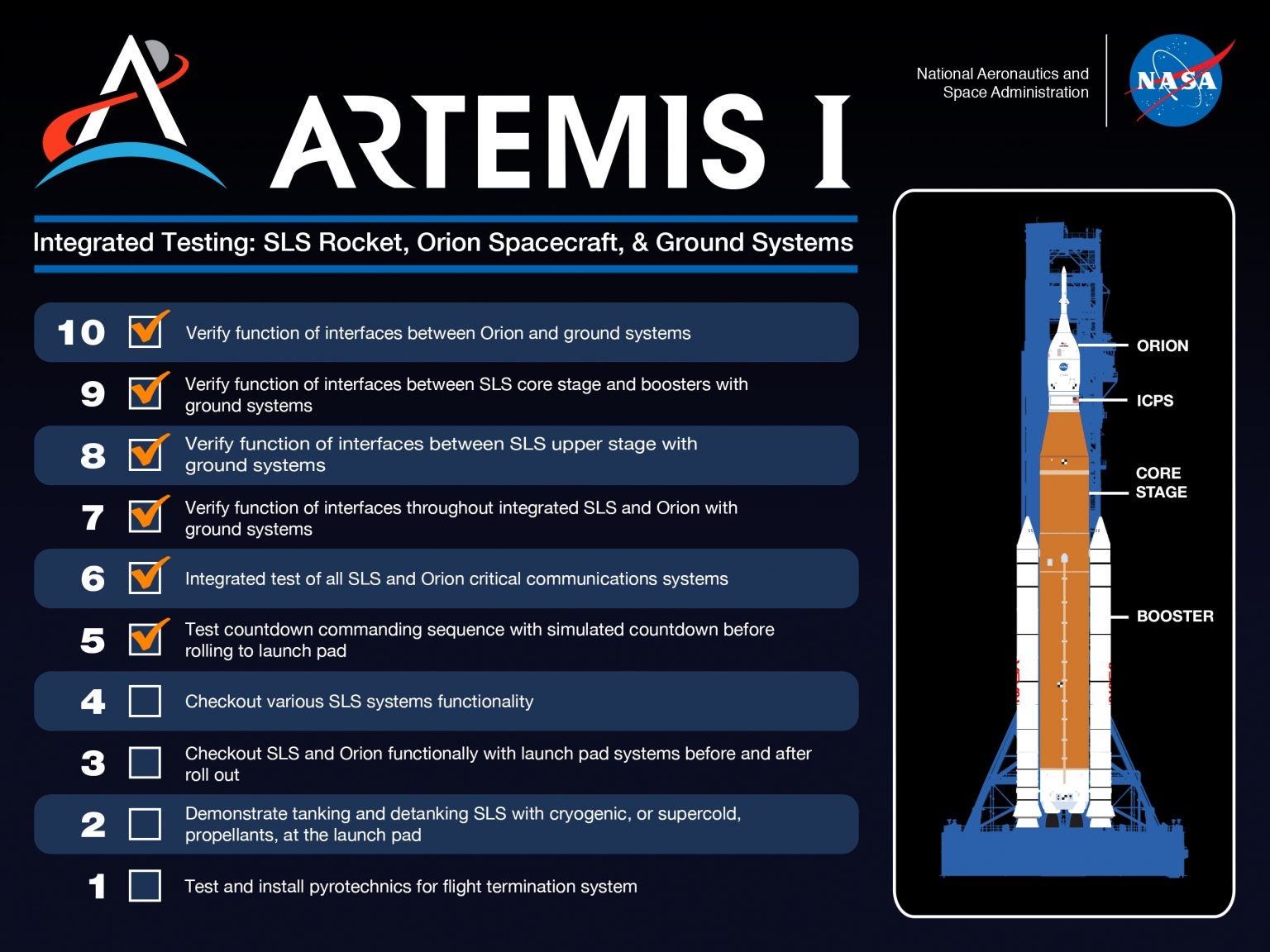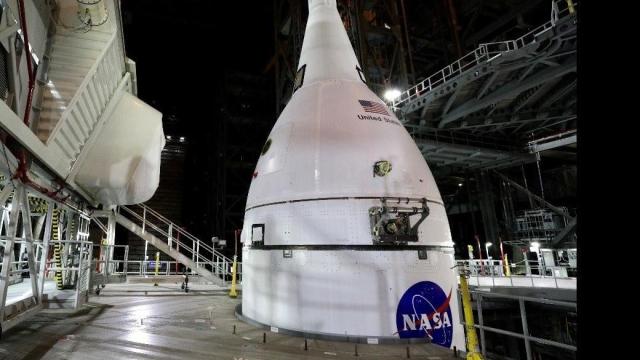NASA won’t be performing a wet dress rehearsal of SLS in February as planned. This latest delay to the Artemis I mission means the 98.15 m-tall rocket won’t roar through Florida skies until April at the earliest.
NASA’s Space Launch System (SLS), with its Orion crew capsule nestled up top, is going to have to stay inside the Vehicle Assembly Building at Kennedy Space Centre in Florida for a little while longer, but hopefully not for too much longer.
In a statement issued this morning, NASA said it’s hoping to transport SLS to Launch Pad 39B in March, at which time Artemis mission controllers can conduct a wet dress rehearsal, in which propellant is added to the rocket’s tanks and then removed. Assuming that goes well, the rocket will go back to the hangar for final tests and then get rolled out once again to the launch pad, this time for real.
The wet dress, as industry folks call it, was supposed to happen in late January, and then in early February, but the timelines keep getting pushed forward. The most recent delay had to do with a glitchy RS-25 engine flight controller, a problem that’s now been resolved (though not yet fully understood — a formal report has yet to be released).

Speaking to reporters earlier today, Tom Whitmeyer, deputy associate administrator for exploration systems development at NASA, said Artemis teams are “closing things out and getting ready for launch,” but there are still a “lot of little tasks that we have to complete,” as the rollout of SLS is proving to be “logistically challenging,” he said. The team needs additional time to complete these closeout activities, as engineers “are conducting final integrated tests of Orion and SLS along with the ground equipment” prior to the wet dress, according to the NASA press release. A rollout in mid-March seems plausible, Whitmeyer said, but he refrained from committing to an actual date.
Mike Bolger, program manager for exploration ground systems at Kennedy Space Centre, said it’s crucial that NASA get the first launch right, as SLS will enable the next 30 years of space exploration, as he explained during today’s briefing. Once aloft, SLS will become the world’s most powerful rocket and a key component of the upcoming Artemis missions to the Moon and Mars. Bolger said major progress has been made, such as the countdown test, and teams are currently testing flight termination systems.
“It’s not one specific thing,” added Whitmeyer, reiterating that it’s “just a lot of different things we need to close out,” as it’s a big rocket loaded with all sorts of different systems. Whitmeyer likened this end process to a renovations punch list, saying there’s nothing major left to do, as it’s now a matter of removing the small scratches, so to speak.
The next major milestone will be the wet dress, hopefully in mid-March. Whitmeyer said the purpose of the wet dress is to see how the system performs and then go from there. Mike Sarafin, Artemis 1 mission manager, said his team is “on track” and will be “ready to go when the hardware is ready.”
Sarafin provided two possible launch windows for Artemis 1: April 8 to 23 and May 7 to 21, but he cautioned that these are subject to change. With the inaugural launch of SLS, mission planners are having to deal with “first-time uncertainties” and also known uncertainties — such as inclement weather — making predictions difficult, he said during the briefing.
The inaugural launch of SLS is known as the Artemis 1 mission, in which an uncrewed Orion will travel 450,000 km to the Moon and back without landing on the lunar surface. This will set the stage for Artemis 2, a repeat of the first mission but with an actual crew onboard. The big show will be Artemis 3, in which two NASA astronauts — a woman and a person of colour — will attempt to land on the Moon. Artemis 2 is currently scheduled for May 2024, while Artemis 3 won’t happen any earlier than 2025. During today’s briefing, the NASA officials were tight-lipped about the latest delay and whether it would have any bearing on these pre-existing timelines.
Today’s briefing offered very little in terms of specifics, and the general message was that engineers are hard at work on what is a very difficult task. As always, we have to accept these new dates with a grain of salt. NASA, it’s fair to say, is stunningly inept when it comes to crafting viable timelines.
